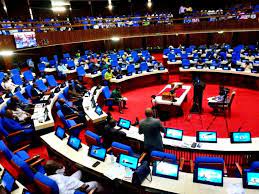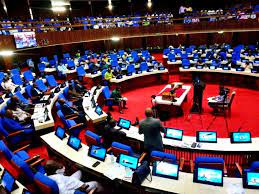Here in this post we discussed the parliament of Sierra Leone, the history of the parliament, the establishment and the members.
Parliament of Sierra Leone is the legislative branch of the government of Sierra Leone. It is principally responsible for making laws. The Sierra Leone parliament consists of 149 members, of which 135 members are directly elected from across Sierra Leone’s 16 districts, while 14 are paramount chiefs appointed from the 14 rural districts. The parliament is led by the Speaker of the House; the position is currently held by Abass Bundu of the Sierra Leone People’s Party. The current elected 135 ordinary members of parliament are composed of members of the All-People’s Congress and the Sierra Leone People’s Party which are the two largest political parties in Sierra Leone.

HISTORY OF THE PARLIAMENT
The Sierra Leone Parliament, like its counterparts in other former British colonies, began as a Legislative Council. It was inaugurated in 1863 but was renamed the House of Representatives in 1954. The first decade of Independence (1961 – 1971), often referred to as the golden age, was a momentous period in the country’s Parliamentary evolution. When the British crown took management of the colony in 1808, no African was represented in the colony’s administration; the governor, with a few white officials ruled the colony by a body known as the Governor’s Advisory Council.
Read: PAST PRESIDENTS OF SIERRA LEONE TILL DATE
By the mid-nineteenth century, the Creoles were determined to have a say in government. A Committee of Correspondence, constituting a group of Creole businessmen was formed in 1853, and was later replaced by the Mercantile Association in 1858 with the primary objective of securing the right of political representation for Colony citizens. Petitions and newspapers to the Secretary of State for Colonies served as pressure, calling for a new constitution and an elected assembly for Sierra Leone. In the 1863 Constitution, the legislature was reorganized and inaugurated but with no provision made for popular representation.
The current Sierra Leone Parliament owes its origin to colonial constitutional developments dating as far back as to 1863 when attempts were made by the British colonial authorities to put in place Legislative and Executive Councils.
After independence in 1961, Sierra Leone Parliament continued to evolve. It became a completely elected body. By then the office was located at the mechanized section of the Treasury Building, located at George Street in Freetown which was our first parliamentary building. Apart from the Paramount Chiefs that were indirectly elected through an Electoral College System, all Members of Parliament were elected by an electoral system, based on a single member constituency. The defining parameter for the delimitation of electoral boundaries was population quota, based on the most recent census results. Up to 1967, the SLPP which was the majority in Parliament, constituted the Executive.
CURRENT PARLIAMENT
The Sixth Parliament of the Second Republic of Sierra Leone comprises the SLPP (81) and APC (54) seats with a total of 14 Paramount Chiefs.
ESTABLISHMENT OF PARLIAMENT
There shall be a legislature of Sierra Leone which shall be known as Parliament, and shall consist of the President, the Speaker and Members of Parliament.
Subject to the provisions of the Constitution of Sierra Leone, the legislative power of Sierra Leone is vested in Parliament. Parliament may make laws for the peace, security, order and good government of Sierra Leone.
MEMBERS OF PARLIAMENT
Members of Parliament shall comprise the following: one Member of Parliament for each Constituency/District who shall, subject to the provisions of this Constitution, be elected in such manner as may be prescribed by or under any law from among the persons who, under any law, are for the time being Paramount Chiefs; and such number of Members as Parliament may prescribe who, subject to the provisions of this Constitution, shall be elected in such manner as may be prescribed by or under any law.
The number of Members of Parliament to be elected pursuant to paragraphs (a) and (b) of subsection (1) shall not together be less than sixty.
In any election of Members of Parliament, the votes of the electors shall be given by ballot in such manner as not to disclose how any particular elector votes. Members of Parliament shall be entitled to such salaries, allowances, gratuities, pensions and such other benefits as may be prescribed by Parliament.


